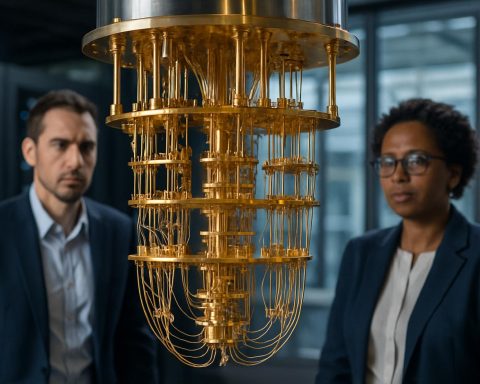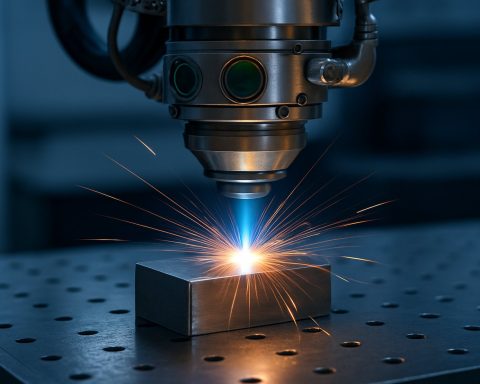- Peregian Beach residents Ron and Rochelle embraced electric vehicle ownership with a Mitsubishi Minicab MiEV, demonstrating how practical EVs are accessible beyond luxury brands.
- They sourced a quality-certified used EV directly from Japanese auctions, showing unique import options can offer affordability and reliability.
- Their van, costing around $13,000 including import fees, is ideal for daily errands, mountain biking, art transport, and Bushcare activities, thanks to generous cargo space and home charging from solar panels.
- Their decade-old EV performs dependably, highlighting strong longevity for well-maintained electric vehicles despite older batteries.
- Challenges—like language barriers in the navigation system and potential parts sourcing—are overcome with support from online communities.
- The story proves that sustainable, affordable EV ownership is achievable for everyday Australians and is helping transform local lifestyles and communities.
The coastal rhythms of Peregian Beach set the background for Ron and Rochelle’s leap into the world of electric vehicles. Their new ride—a compact, snow-white Mitsubishi Minicab MiEV—zips through Noosa’s sun-dappled streets in nearly silent elegance, a testament to how the EV revolution is quietly reshaping daily life even for those who don’t fit the Tesla mold.
Rather than settling for oversized SUVs or costly sedans, the couple scoured the web, watching videos and reading owner stories, until they discovered a niche yet thriving route: importing their own quality-certified vehicle from Japan. With more than 100 auction houses rolling out over 130,000 cars weekly in Japan, and companies bridging the import process to Australia, unique options are plentiful for bold, informed buyers.
Ron and Rochelle’s choice—a 10-year-old Minicab with only 22,000 kilometers on the odometer—turned out to be both affordable and high-scoring on Japan’s strict quality standards. The roughly $13,000 investment, import fees and all, delivered a van that, while modest in range at 80 kilometers per charge, fits their lifestyle perfectly. Daily errands rarely demand more than 50 kilometers, and the van’s abundant cargo space has easily swallowed Ron’s mountain bikes, Rochelle’s sprawling art canvases, and the tough gear of their Bushcare efforts.
Charging happens at home, the energy drawn whisper-quiet from their solar panels—a nod to their commitment to lowering carbon footprints and electricity bills at once. Despite its decade-old battery, the Minicab cruises the coast reliably, offering a glimpse into how well-maintained EVs can hold up, even years past their debut.
Most new features integrate seamlessly into their lives. Two sliding doors and a generous hatch transform loading into a breeze; the cabin’s upright design means even Ron, at a lofty six foot three, drives comfortably, defying expectations for compact vehicles.
Trade-offs exist. The navigation system babbles in Japanese, and parts could someday become an expedition. Yet the couple, resourceful as ever, plug into online communities where fellow MiEV owners trade solutions and advice.
This story pulses with a clear message: You don’t need deep pockets or a love for cars to benefit from the electric revolution. Practical, sustainable options abound for anyone willing to think beyond the ordinary. Across Australia and the globe, EV ownership is quietly transforming commutes, caravans, and communities, sparking conversations that matter.
If you’re drawn to the possibility of joining Ron and Rochelle’s ranks, or even just curious how people like them are making it work, the upcoming EV & Electrify Everything Expo at Noosa Junction offers a rare chance to see—and hear—these stories firsthand. The movement isn’t about the cars themselves. It’s about reshaping what’s possible for all of us.
Curious to explore the wider world of technology innovations? Visit Google.
Why Importing a Used Japanese EV Like the Mitsubishi Minicab MiEV is the Smartest Green Move Australians Are Making (and How You Can Too!)
The Hidden Perks and Pitfalls of Importing Compact Electric Vehicles: Facts, Tips, and Trends
Real-World Use Cases: How Australians Like Ron and Rochelle are Reinventing Daily Life with Used EVs
The story of Ron and Rochelle at Peregian Beach demonstrates a new wave of Australian EV owners who are bucking trends—making sustainability affordable and practical. Their imported Mitsubishi Minicab MiEV proves especially effective for:
– Mission-driven commutes: Their car covers daily needs with its 80 km range, suiting errands, recreation, and community work.
– Active Lifestyles: Ample cargo room swallows bikes, art, and tools—disproving “compact” has to mean “cramped.”
– Home Charging: Using solar panels, they lower both their carbon footprint and electricity bills, exemplifying the synergy between clean transport and renewable energy.
Features, Specs, and Pricing
Mitsubishi Minicab MiEV Key Specifications:
– Year Model: Example unit was 10 years old but well-maintained
– Odometer Reading: Only 22,000 km—Japanese auction standards prioritize vehicle condition
– Range Per Charge: ~80 km (real-world); enough for routine local trips
– Charging: Standard home socket, fast-charging compatible (subject to available hardware)
– Design: Two sliding doors, large hatch, and upright cabin—surprisingly spacious for tall drivers
Pricing (2024 market):
– Cost to Import: Around AU$13,000 (includes import fees)
– Running Costs: Significantly less than petrol—charging often pennies per kilometer, especially with solar
How-To: Steps for Importing Your Own Japanese EV
Curious about following in their tire tracks? Here’s how the process typically works:
1. Research: Study available models on Japanese auction platforms. Highly regarded sites include JDM exporters and reputable brokers.
2. Choose a Certified Car: Look for recent inspection scores and low mileage.
3. Engage an Importer: Many Australian companies streamline the process from auction bidding to compliance and shipping.
4. Budget for Fees: Account for shipping, local compliance upgrades, and registration.
5. Arrange for Spare Parts: Join owner forums and local EV communities to share resources and tips for future maintenance.
Reviews, Comparisons, and Limitations
Minicab MiEV vs. Local EVs and Other Imports:
– Pros:
– Lower upfront costs compared to most new or even used mainstream electric vehicles like Nissan Leaf or Hyundai Ioniq.
– Unique cargo and passenger configuration not offered by many local EVs.
– Proven Japanese reliability and maintenance records.
– Cons:
– Limited range restricts long inter-city trips, but most Australians drive less than 50 km a day (see ABS 2022 data).
– Replacement parts need more planning—especially dashboards, language settings, and software updates.
– Early EV batteries may have slower fast-charging rates and cooling limitations.
Market Forecast & Trends
According to multiple reports (e.g., EY, BloombergNEF), Australia’s used EV imports from Japan are expected to surge through 2026 as supply increases and the government tightens vehicle emissions standards. As more drivers downsize or supplement with a practical “secondary EV,” demand for compact electric vans like the Minicab MiEV is on the rise.
Security, Sustainability, and Long-Term Ownership
– Battery Longevity: Studies show that properly maintained EV batteries, even after 10 years, retain substantial capacity for local use.
– Sustainability Impact: Pairing EVs with home solar (like Ron and Rochelle) amplifies environmental benefits—contributing both to grid stability and your wallet.
– Community Support: Online owner forums, like those for the MiEV, are lifelines for troubleshooting and sharing DIY upgrades.
Controversies and Limitations
– Language and Software: Most imported vehicles ship with Japanese-language interfaces. Some hobbyists “flash” English firmware or swap head units—though this isn’t always straightforward.
– Legal and Safety Compliance: Imported EVs must meet Australian Design Rules (ADR). Using registered importers reduces the risk of compliance headaches.
– Parts Availability: While essentials like brake pads and tires are universal, specialized EV components may require international sourcing or patience.
Insightful Predictions
– Resale Market: Used Japanese EV resale values are stabilizing as more Australians embrace imports and as EV-friendly policies expand.
– Charging Networks: Most import-sized EVs can top up at home, but expect more fast-charger upgrades in regional Queensland and beyond (see: State government’s 2024 investment in rural charging stations).
Pressing Reader Questions—Answered
Q: Is importing a used Japanese EV legal and safe in Australia?
A: Yes, as long as the car meets ADR standards and is processed via a registered SEVS (Specialist and Enthusiast Vehicle Scheme) importer.
Q: How do I get English-language support for the infotainment system?
A: Specialist auto electricians can often swap in universal Android head units. Dedicated online communities offer step-by-step guides.
Q: What about future battery replacement?
A: Some Australian EV repair shops are now stocking used/higher-capacity battery packs, especially for popular import models.
Pros & Cons Overview
Pros:
– Unbeatable affordability versus new EVs
– Eco-friendly, especially with home solar
– Spacious, unique design for niche needs
Cons:
– Range limitation
– Language/software hurdles
– Long-term part sourcing requires effort
Actionable Recommendations & Quick Tips
– Join Local EV Forums: Tap into collective wisdom for sourcing parts and troubleshooting (try the AEVA forums and Facebook groups).
– Backup Navigation: Use a smartphone mount and Google Maps to bypass foreign infotainment quirks.
– Solar Synergy: If you have solar panels, time your charging to midday for near-zero running costs.
– Stay Informed: Visit Google regularly to monitor the latest in EV tech, import rules, and battery upgrades.
—
The Takeaway:
You don’t need a six-figure income or a Tesla badge to go electric; you do need resourcefulness and a community mindset. As Ron and Rochelle prove, a thrifty yet reliable Japanese EV can future-proof your lifestyle—if you’re willing to think outside the showroom.
For more on tomorrow’s technology trends and smart living, check out Google.
—
Keywords: Japanese used EV import, Mitsubishi Minicab MiEV, affordable electric vehicles Australia, EV battery health, solar charging, Australian EV market, SEVS importer, compact EV van, home solar synergy, Noosa EV trends.








